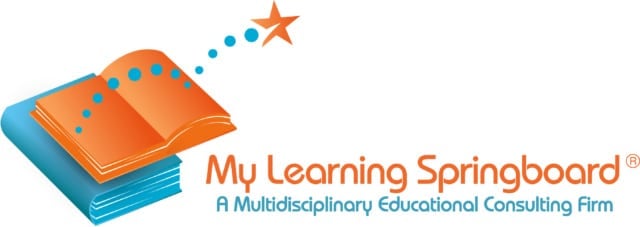 In the UK’s unique education system, all students are required to sit formal examinations called GCSEs at around the ages of 15 to 16, after which they are allowed to leave school with no further education requirements. For those who wish to continue their high school education, however, the next step is to study A Levels (Advanced Levels) during the two years between the ages of 16 and 18.
In the UK’s unique education system, all students are required to sit formal examinations called GCSEs at around the ages of 15 to 16, after which they are allowed to leave school with no further education requirements. For those who wish to continue their high school education, however, the next step is to study A Levels (Advanced Levels) during the two years between the ages of 16 and 18.
A Levels are designed as a two-year course culminating in exams and a qualification that is superior to a GCSE qualification, but less advanced than a university degree. Indeed, A Levels are an important stepping stone to gain admittance to university in the first place, with universities offering prospective candidates conditional places, dependent upon their achieving certain grades on the final A Level tests. For example, the university may require “three As”, or “two Bs and a C” and it is up to the student to attain these results in their final exams.
Grading
A Levels are graded by letters, ranging from A* (for scores above 90%) through A (for scores above 80%) then B (for scores above 70%) and so on down to E for scores above 40%. Anything under 40% will earn a U, meaning that it was unclassified.
Assessment
Examinations for A Levels happen at the end of the second year of study in one flurry of examinations taking place across several days during the early summer. Certain subjects, such as Art & Design or the main trio of sciences (Biology, Physics and Chemistry) include a significant coursework element that will be completed before these final exams; nonetheless this coursework component will only be worth up to 20% of the overall grade, making it a significant, but not primary part of the assessment.
Uniqueness
The most remarkable feature of A Level courses, which makes them so unique globally, and so notably different from the American system or the European Baccalaureate, is that there are no mandatory subjects. At the age of 16, students are able to choose the subjects that they wish to study and drop all other subjects. Students may pick a maximum of five subjects to study, but most students study three subjects, which is what most universities expect. It may seem tempting to attempt to study more than three subjects, since this would make a student stand out to top universities; but each course of study is very demanding, and there is a very real possibility of struggling under the workload if one takes on too many courses, potentially causing grades to suffer and having the opposite effect of that intended.
The lack of mandatory subjects may be a good or bad thing for the student’s academic growth. For example, a student who loathes math may well thrive once they are no longer obliged to spend time struggling with a hated subject; at the same time, this subject will get no further support and existing math skills may atrophy during the two years that they study their chosen courses. If they wish subsequently to study at an American university, for example, they may find the compulsory math requirements in the American system to be particularly onerous.
However, the unique feature of A Levels that allows for the student to pick courses that they actually want to study encourages students to choose areas of personal interest that will motivate them to pursue their academic career. Studying only three subjects may result in a narrower academic field, but the courses explore those areas more deeply, beginning at an early age a process of specialization that continues into university and the world of employment beyond. By comparison, most American students follow a broader but therefore less in-depth curriculum throughout high school and into their first years of college, only beginning to specialize at the point that they pick their major.
Choosing A Levels
One issue with choosing A Levels at the age of 16 is that many students don’t know at this point in their lives what they wish to study in the future or what vocation they might want to pursue, and therefore do not feel clear about which subjects to pick, and perhaps more importantly which ones they can safely drop. For example, dropping Chemistry at this point would effectively rule out the possibility of a career in medicine.
With over 80 subjects to choose from, trying to make the ‘correct’ choice of which subjects to study can be overwhelming. It is therefore helpful to consider the end-goal, since most students study A Levels with the intention of moving on to university. Universities are typically looking for students with sufficiently strong grades in three subjects, and they will be looking for subjects that pertain to the college course itself. Thus, for example, a student who wants to study for a medical degree will have to have a chemistry A Level and then another two STEM subjects, such as Biology and Math. On the other hand, someone wishing to pursue Politics at university could happily choose more diverse subjects, but will definitely need to have studied at least one essay-based humanities A Level, such as English literature or History, since the college course will have a heavy essay component.
Therefore, it is sensible to contact universities that you might wish to attend to see how many A Level subjects they expect and also what grades are typically required. Alternatively, you might consult UCAS’s guide to choosing a course. The Russell Group, which represents 24 of the leading UK universities, also offers a website to help students make informed choices. However, if you are not yet sure what you wish to study at university – which is typical for 16 year olds – the top ten subjects that keep your options open are: Chemistry, Biology, Physics, Mathematics, Further Mathematics, History, Geography, English Literature, and Languages (either modern or classical). These are all ‘safe’ choices. Ultimately, however, the great gift of A Level is the ability to study whatever is of interest to the student, and it is almost always better to choose subjects that the student will enjoy studying and will be motivated to work on, rather than subjects that they ‘ought’ to do.
International A Levels
As well as the regular UK-based A Levels, there is also a variation called the International A Level (IAL). The IAL has fewer course options (about 55 rather than 85), but there is not a significant difference between the content to be studied. The big difference is in how the tests are taken. The regular A Level is assessed at one set of tests at the end of the second year of study. International A Levels are more flexible: you have the option to sit them in the same way as the regular A Level in one go at the end of the second year; or you can sit half of them at the end of the first year, and the other half at the end of the second year. Also, there is more than one opportunity to sit these tests during the same year, meaning that it’s also easier to resit the IAL if need be. This modular approach to test-taking may suit some candidates who do not like to have all the pressure of the exams happen in one fell swoop; but for many candidates it is preferable to spend the full two years studying and developing their knowledge and skills before having to put them to the test. Indeed, by taking half the exam after only one year of studying, there is much less time to prepare and master the material, which potentially makes the process harder rather than easier.
Flexibility and Depth
Ultimately, the appeal of A Levels lies in the authority it places on the learner themselves: the student gets to choose for themselves what to study and what matters to them; at the same time they are empowered to stop studying subjects that they do not enjoy and don’t care to pursue. This personal investment and choice will – ideally – lead to a more focused and specialized student who takes genuine interest in their studies and develops a depth of appreciation in three areas that simply wouldn’t be possible if they were having to study more subjects.
For support with college planning in the US, UK, EU, or Canada, please contact our office.
By Nick Thomas, Private Tutor, Brad Hoffman, M.S.Ed., Board Certified Educational Planner, and Faya Hoffman, M.A., Board Certified Educational Planner
